East of Marrakech, over Morocco’s High Atlas Mountains, a desert landscape riddled with spectacular gorges and valleys presides. At the time of my visit in November, snow-capped peaks rendered this ancient land of Berbers even more panoramic. In their pink and red-hued villages, built so clearly from the earth right there, dwell a truly hospitable people. I had the good fortune to visit the home and garden of one Berber family.
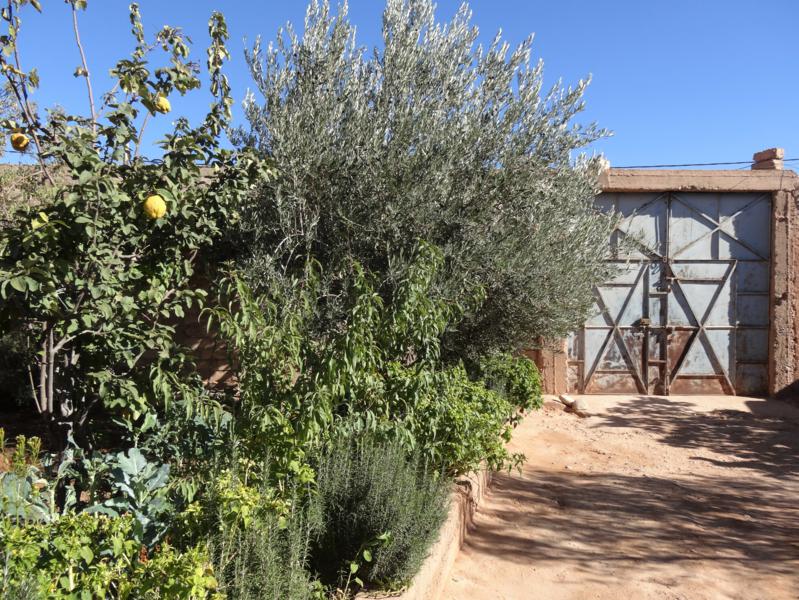
Quince and olives with vegies and herbs beside driveway and entrance gate
It’s a walled garden, like most in this part of the world; the walls form a protective barrier from their inhospitable desert environment. It produces food for the extended resident family, but to say this is its sole purpose pays insufficient credit to its achievement. I visited ‘Jardin Majorelle’ and ‘Le Jardin Secret’ in Marrakech (as one surely must!), both large gardens open to the public. This home garden bears no resemblance to these.
It is intimate and private; to me it gave a delightful charm to the home, and a verdancy immediately noticeable when they opened the front gate to welcome us – coupled with their warm smiles and abundant authentic food. This garden was invisible from, and a huge contrast to, the desert-dusty streets outside and is probably one of dozens in each village flourishing behind high walls. Their garden is as much a part of their ‘home’ as the buildings and the walls. When we showed an interest in it, they spoke with passion and knowledge about all of its plants, and the reasons for them – via their just-as-passionate son’s translation.
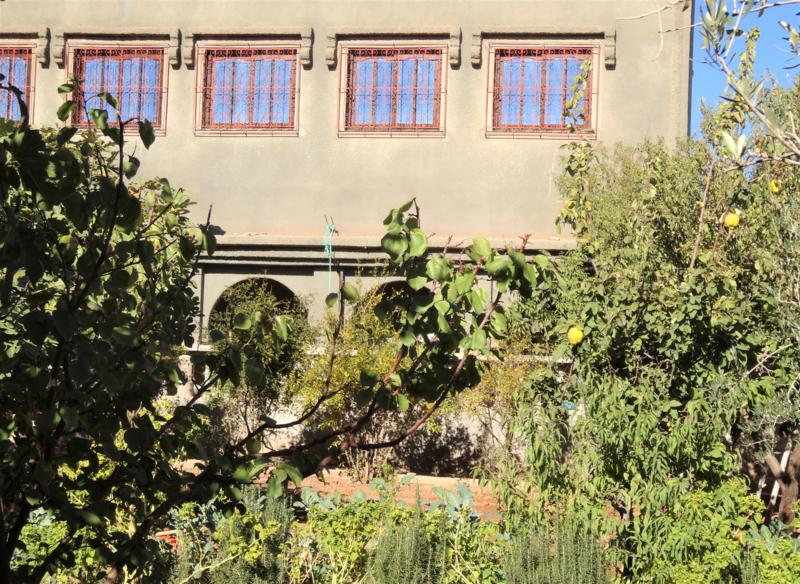
Fruit, vegies and herbs growing happily together

Quince in fruit in November
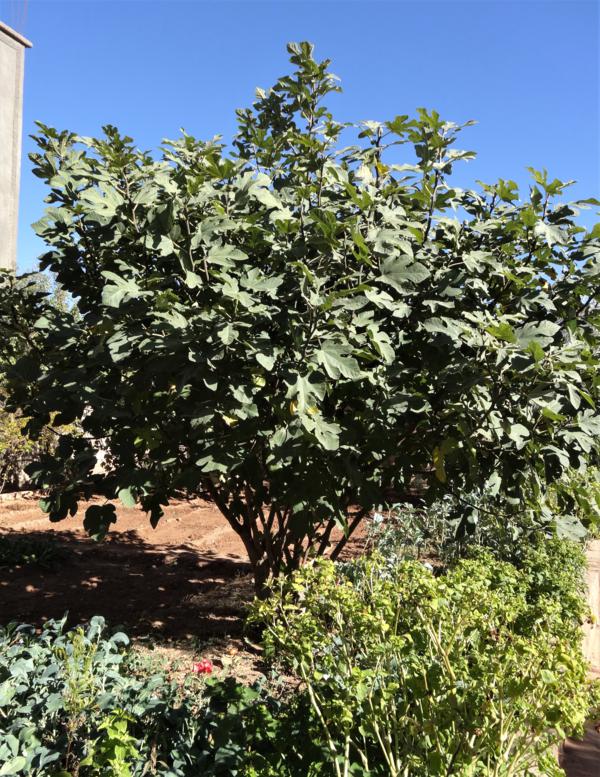
Lovely shaped fig tree
Herbs, flowers and vegetables grow alongside olive and fig trees. Almonds, peaches, pomegranates and quince happily thrive with rosemary at their feet with seasonal brassicas, spinach and chard nearby – this is a fruitful place!

Productive garden beside house with fig, olive and vines providing shade and fruit
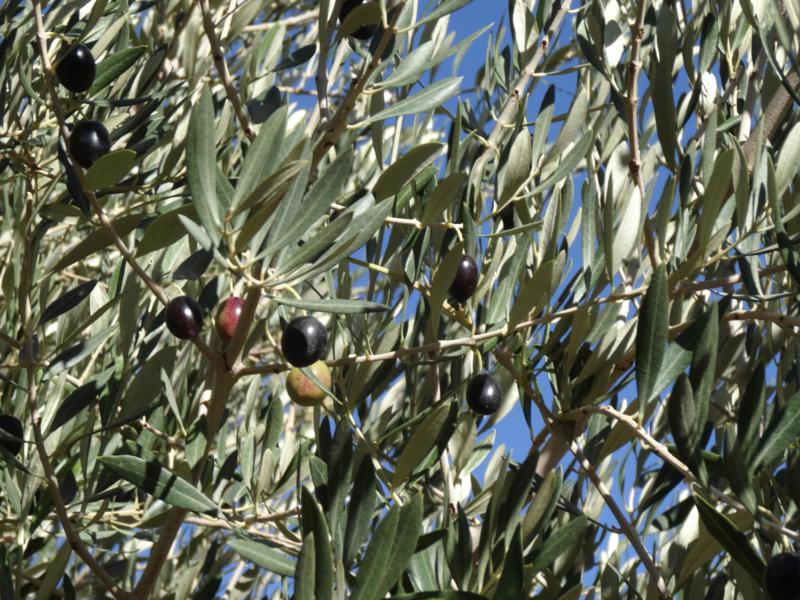
Olives are abundant
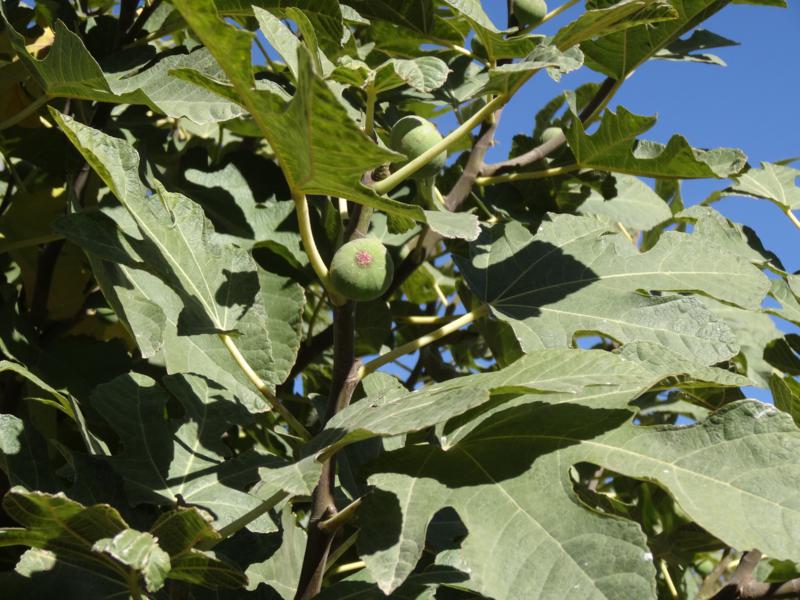
Figs are one of the largest leaves seen in this region
What struck me was its authenticity. This is a garden nurtured by people who grow food because it’s required for their well-being, and they couldn’t contemplate a life without it. It is uncontrived, and far from being ‘designed’, though it is certainly built in an ancient, local way. It is laid out in a practical fashion – the planted areas beside the buildings so the trees and vines shade the walls and there is easy access to them. Centrally between the garden beds is a level ‘driveway’, used as the entrance path, play area for kids, and a multitude of other activities in the cooler hours I’m sure.
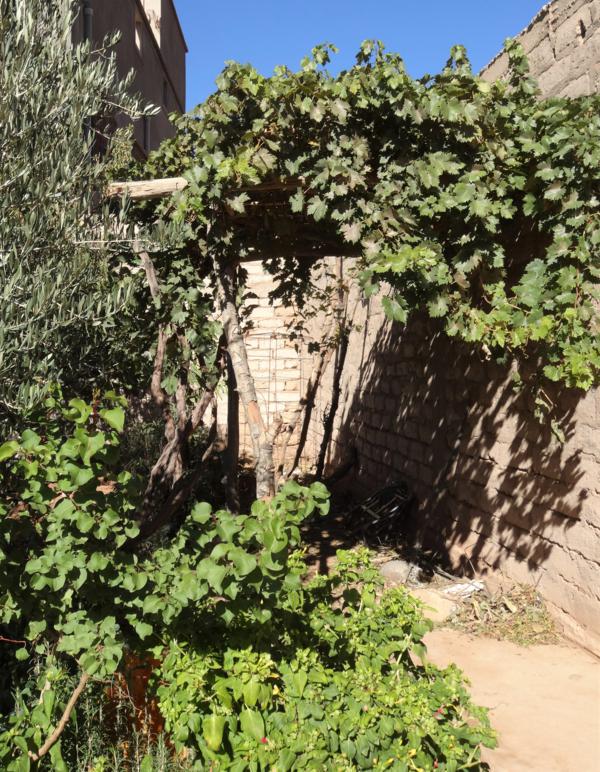
Grape vines creating a shade canopy and fruit
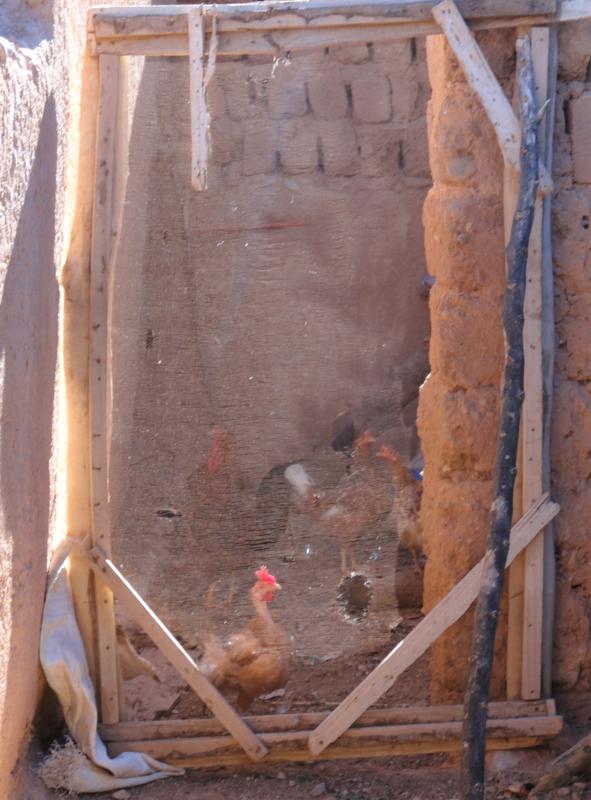
Chook run by the wall behind one of the garden beds in the shade
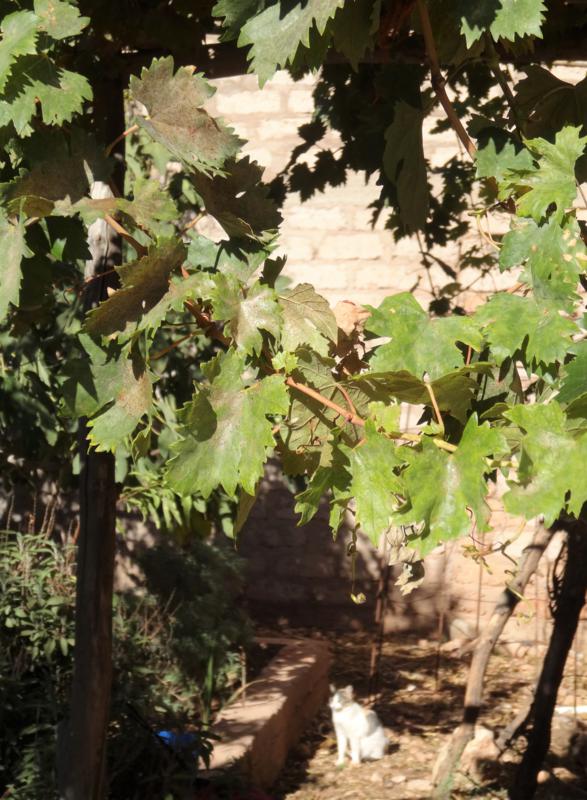
Garden moggy – cats are everywhere in Morocco
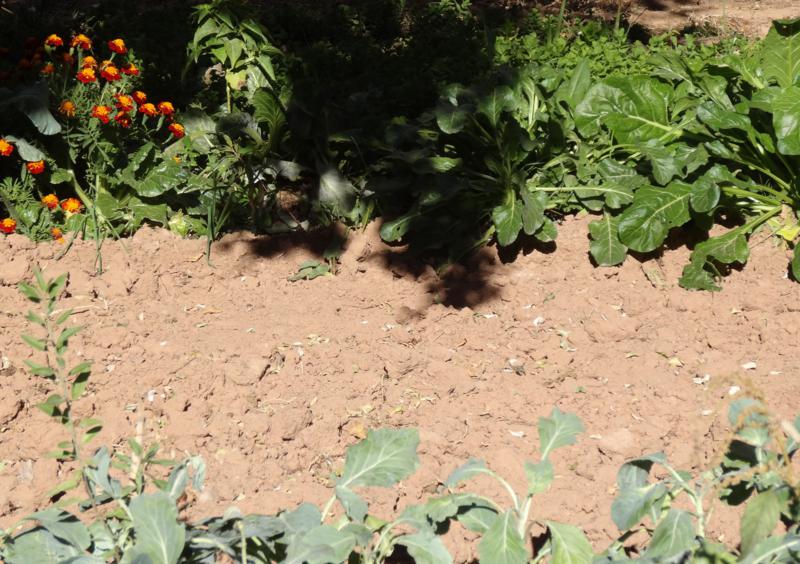
Brassicas and marigolds with fallow rows, possibly crop rotation
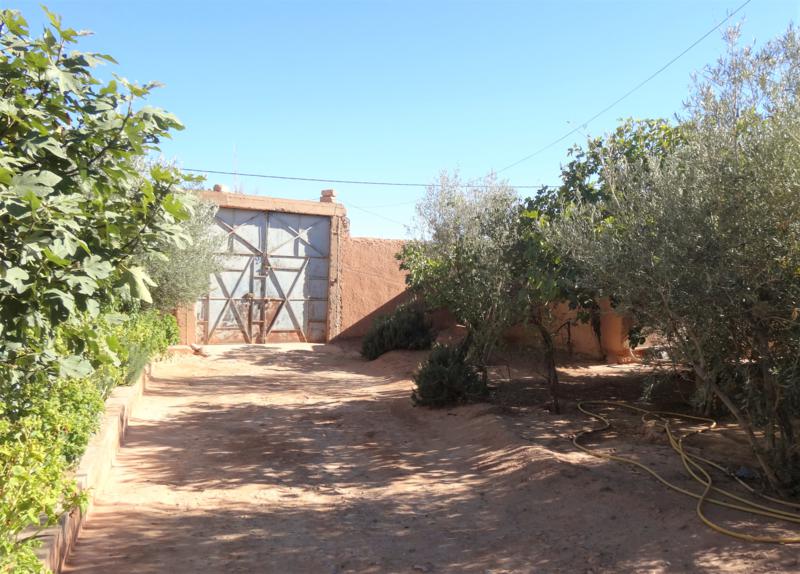
Multi use level area and front gate between planted beds
The Berber people, also known as Amazigh, pre-date Arabic culture in Morocco. They have inhabited Northern Africa since prehistoric times, and fought against Roman, Arabic and French invasions. Berbers have preserved their language and culture which is both African and Mediterranean, never really being conquered. In the 9th and 10th centuries, many Berbers converted to Islam. Prior to this most were Christians or Jews. Two boundless Islamic Berber dynasties, Almoravids and Almohads, ruled large areas of Spain and northwest Africa. Known as the Moors, in garden-lover terms they forged an empire that created the most famous Moorish gardens in Spain, at The Alhambra in Granada.
They were once nomads using camels to cross the Sahara desert, establishing trade routes across Africa. While some remain nomadic, most Berbers are farmers or live in villages such as this one in the Valley of Roses.
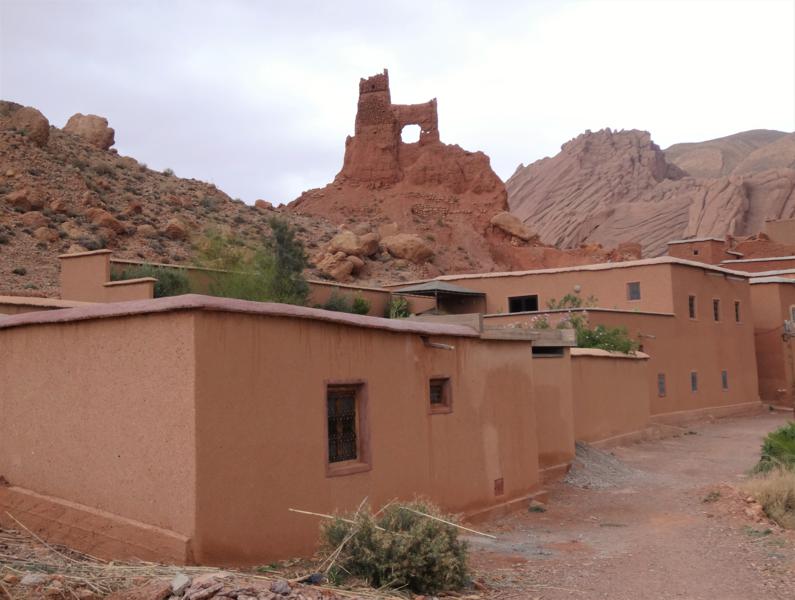
Valley of Roses village
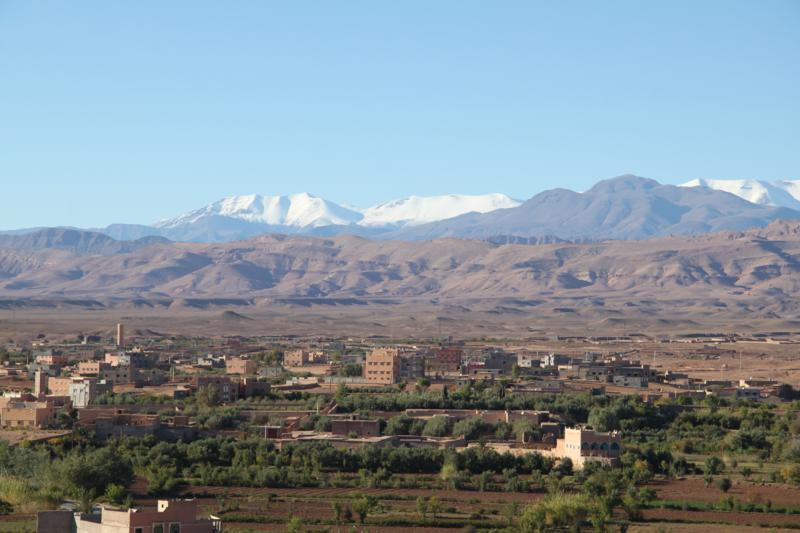
Another village with snow-capped Atlas Mountains

Nomads with traditional black tent we passed one day out on the road
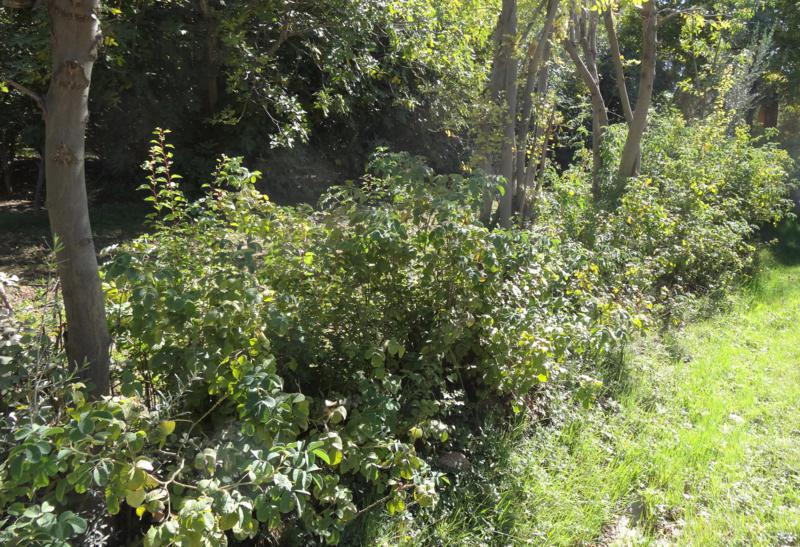
Walking through hedgerows of rose bushes in the Valley of Roses. Each year in May there is a Rose Festival, and I try to imagine the heady perfume of the Damask roses with their spring blooms
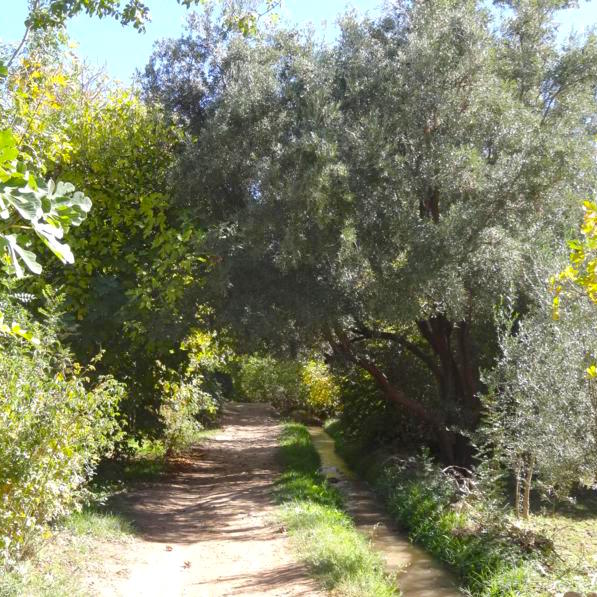
On a walk through poplars, walnuts, olives and pomegranates with crops on the river flats
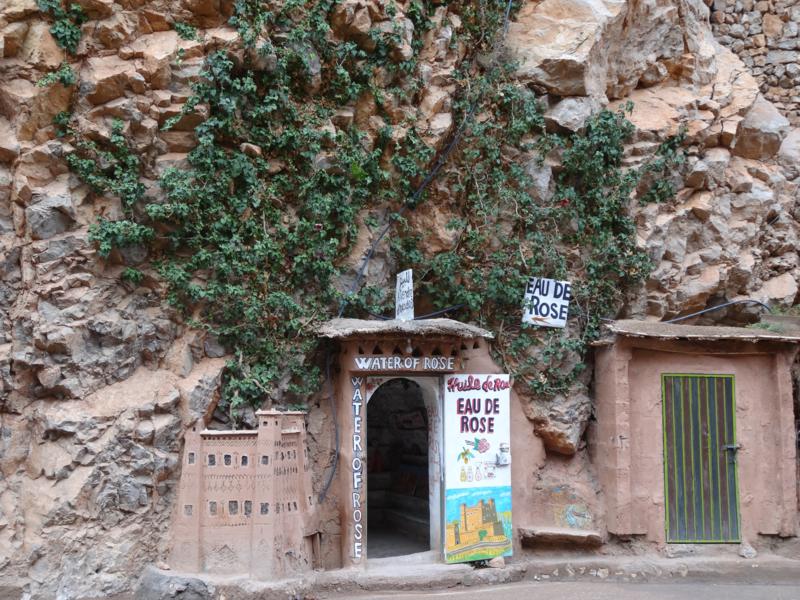
Rose products are sold throughout the whole area, mostly to tourists

Berber women
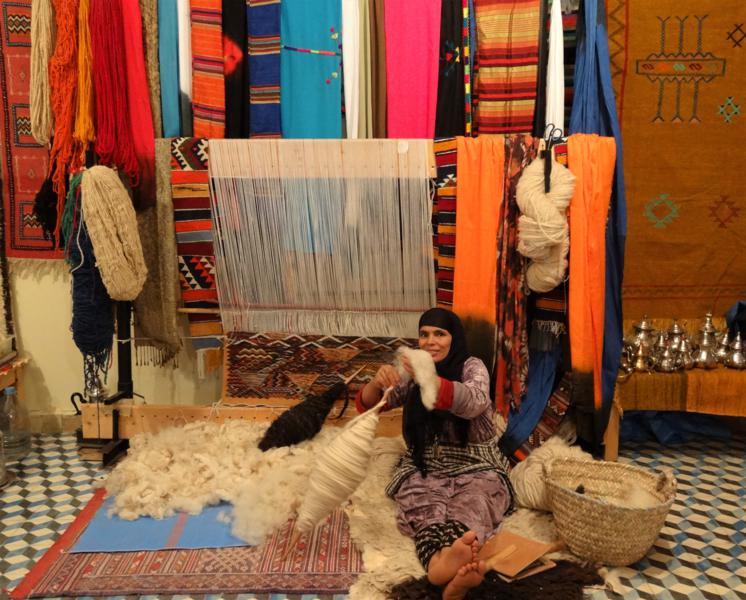
Berber weaving, proud craftspeople
The Berbers have a rich cultural and artistic heritage, and are bound, as needs must, by a strong link to their land, a sense of community, hospitality, sharing food and a specific relationship with spirituality. At Jardin Majorelle in Marrakech, the Berber Museum displays Yves St Laurent and Pierre Berge’s personal collection of Berber art and cultural pieces, including artefacts for daily or ceremonial use, jewellery, costumes, weapons, weaving and decorated doors. It is spectacular and an incredible display of beauty and creativity. I enjoyed it almost as much as the Majorelle garden itself.
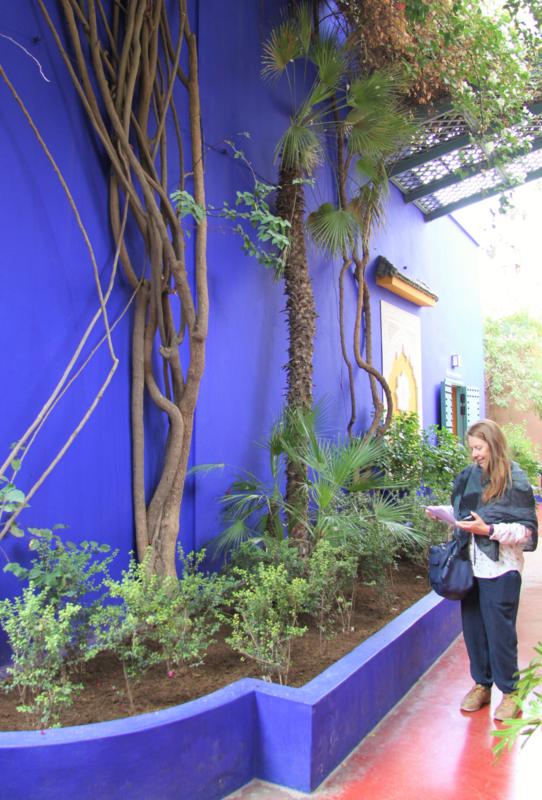
Unfortunately no photos allowed inside the museum. Thinking the blues I’m wearing don’t match up to the ‘Majorelle’ blue

Through the cactus garden to the studio. The Berber Museum at Jardin Majorelle is housed in Jacque Majorelle’s painting studio that was designed by the architect Paul Sinoir in 1931
This is the first part in my series about gardens and travel in Morocco, so if you find it interesting, ‘tune in’ for my next instalment.
Photos by Tony Maher and Louise McDaid
